Artist Research:









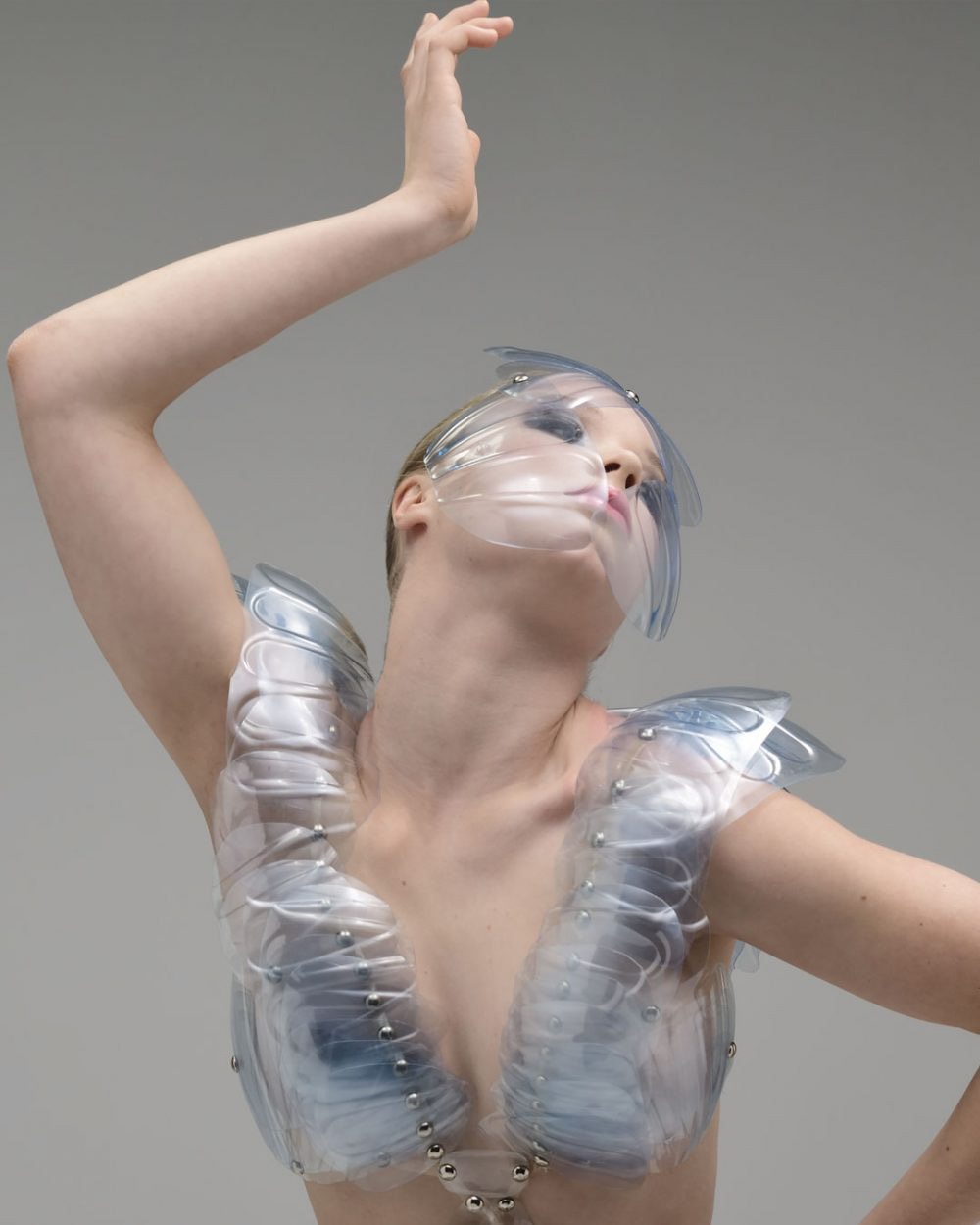
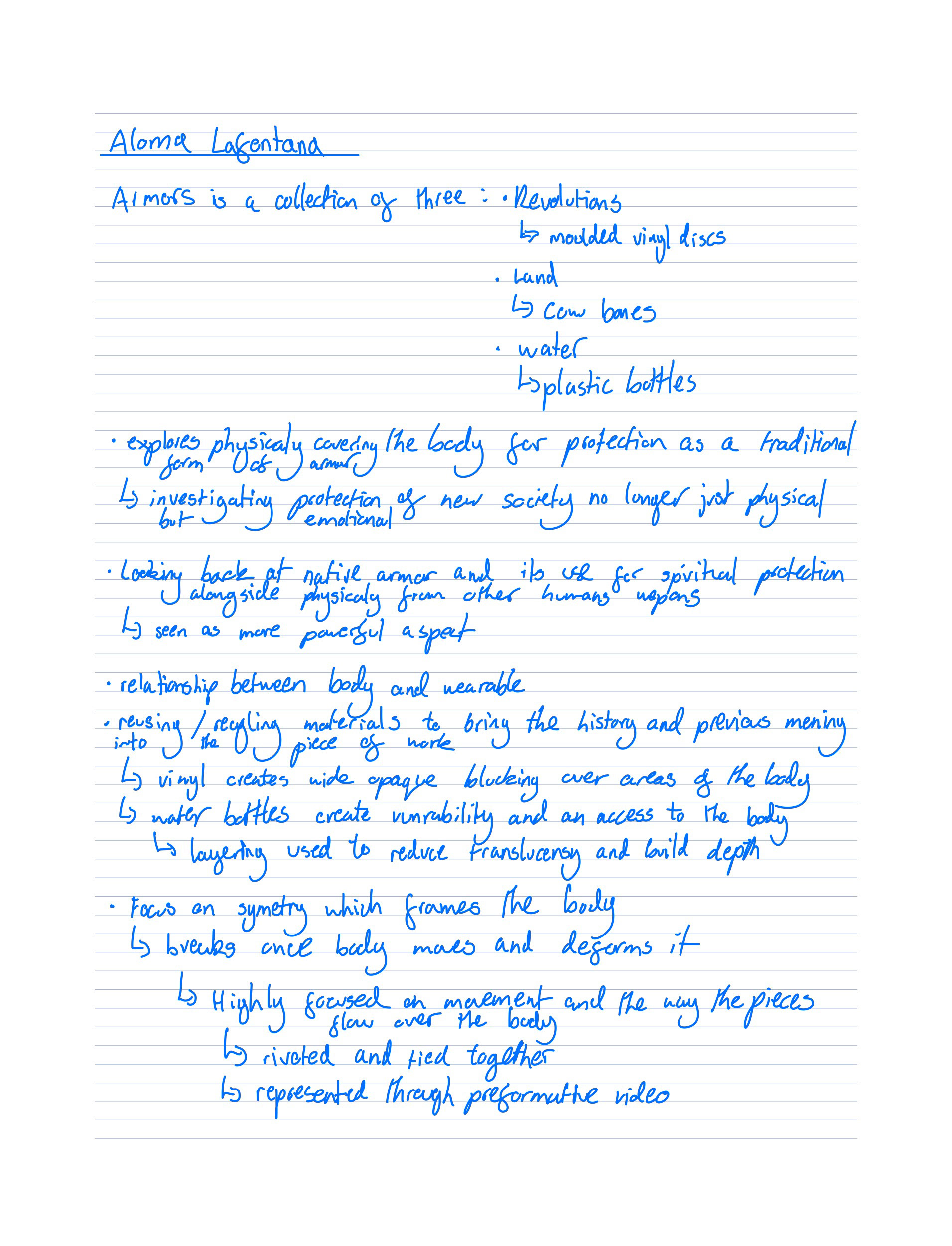
https://alomalafontana.com/armors-video
https://www.stirworld.com/see-features-aloma-lafontana-s-wearable-sculptures-are-interface-of-inner-and-outer-worlds-of-body
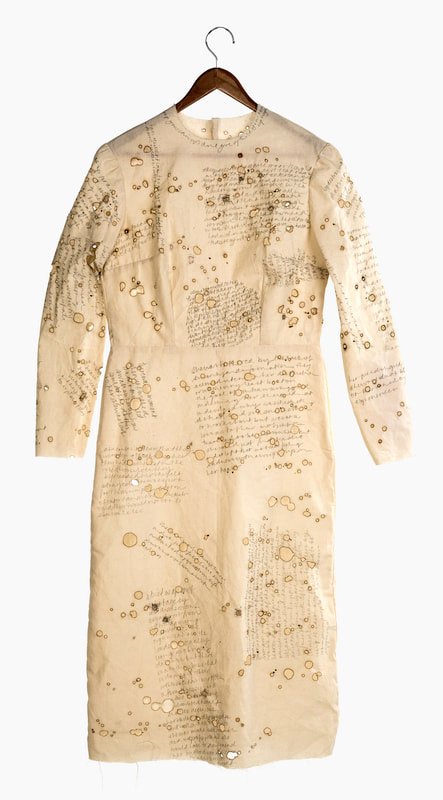
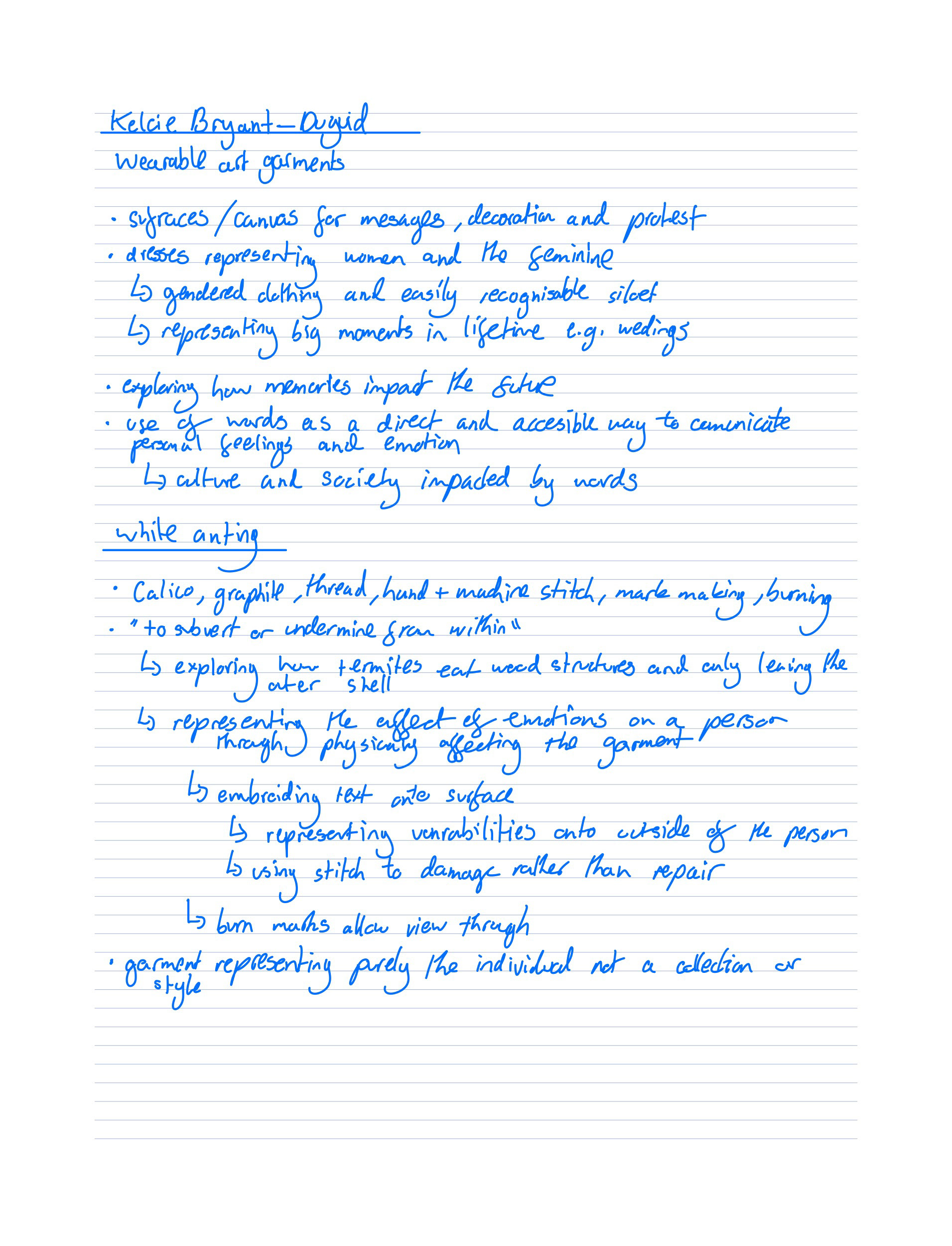
http://kelciebryantduguid.weebly.com/wearable-art.html
http://kelciebryantduguid.weebly.com/--white-anting.html
https://www.fibreartstaketwo.com/articles/duguid/
https://www.durangoherald.com/articles/artist-creates-empowering-wearable-sculptures/
https://www.lindastein.com/series-knights-of-protection-sculpture
Trip To Craft Center
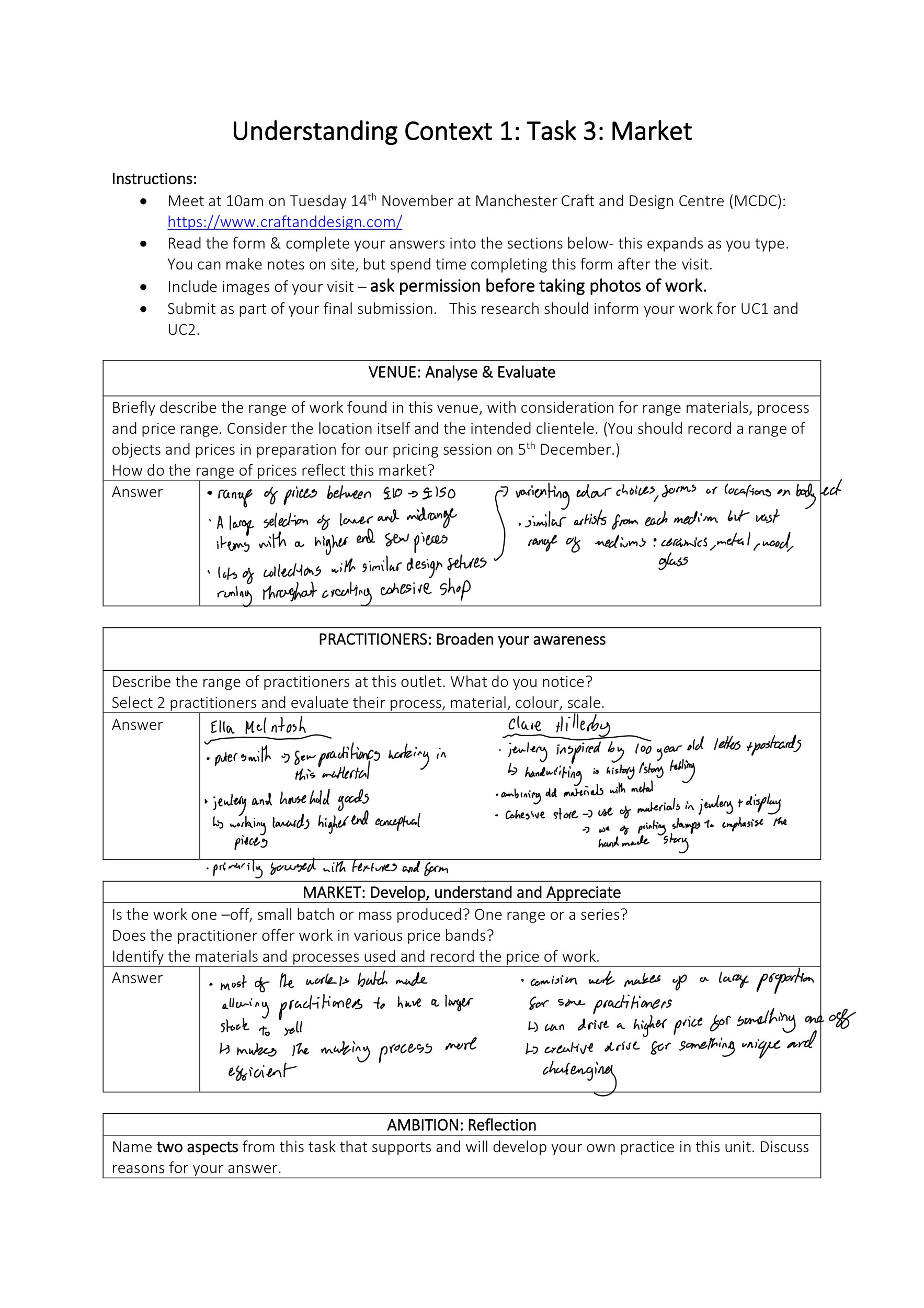


Collect 2023

Collect Open is an annual exhibition working to provide a showcase of the best craft and installation work. This gallery specialises in high-end one-off art from individual practitioners and collectives presenting it to "high-profile collectors, curators, journalists" (Collect, 2023) in Somerset House, London. 80% of the work showcased is required to be produced in the last 5 years providing a space to display work alongside other leading and current craftspeople in the market. On top of this Collect is one of the most highly regarded galleries amongst the top levels of craft. A major benefit of working with the gallery is their private viewings where in 2023, 500 VIP partners from: V&A Museum Patrons, Bonhams, Calico Club and Cromwell Place attended. Also, 2000 Private View invitations were sent to the top corporations. Therefore, being a part of it is a great way to place your practice in the market for sale but also gain valuable exposure to the upper end of craft journalists and collectors. Furthermore, these private viewings put like-minded artists and collectors in the same room discussing your work creating a heightened environment for conversation and exploration of the work and artist.
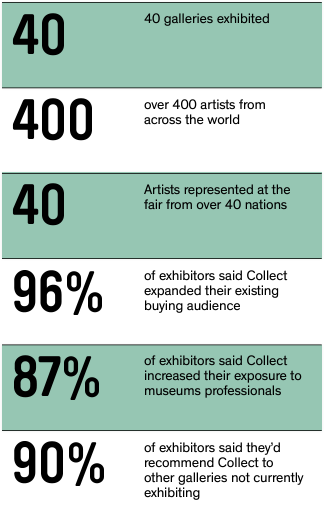
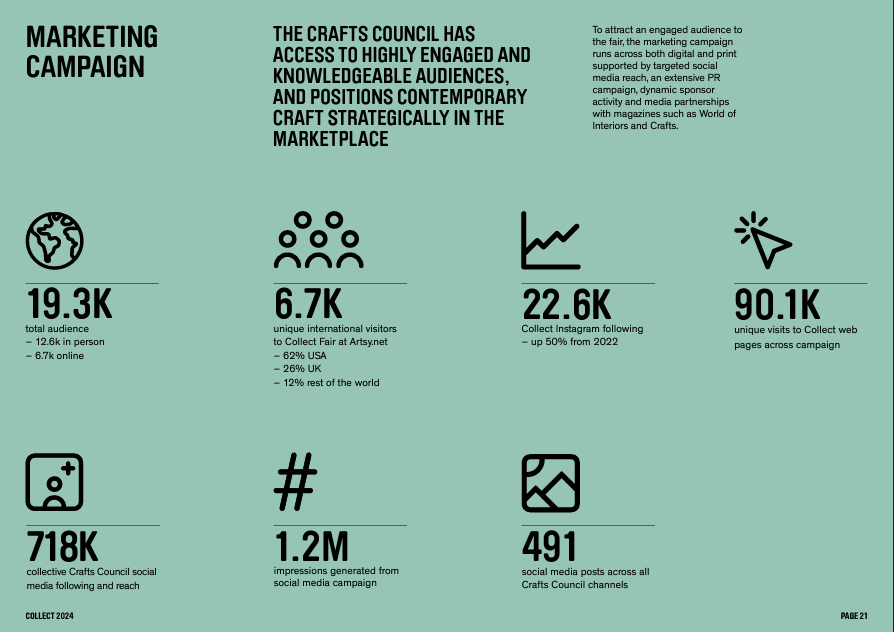
12,600 people visited the fair in person, an additional 6,730 online via Artsy. net providing a vast quantity of exposure to the general public. Not only does the gallery draw in high numbers the visitor satisfaction rate is incredibly high with 75% off visitors rating their experience ‘excellent’ or ‘very good’. Collect has also got a very good PR strategy to gain as many eyes as possible onto the exhibition and artists. They target high end companies and the best journalists to push the word of the upcoming events, which also brings viewers to the previous artists who have exhibited providing ongoing exposure.
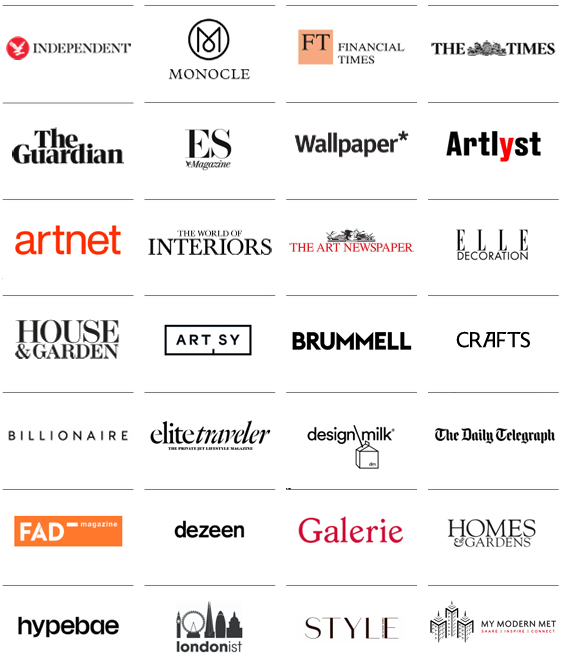
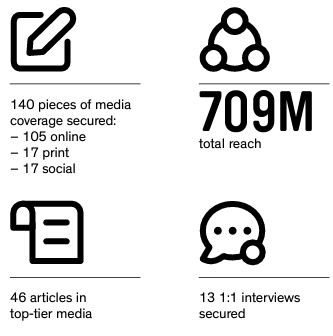
Pricing at Collect varies dramatically form £300 - £50000 across multiple different mediums. It is hard to place my work in a single category as I think that it transcends sculpture, jewellery and performance art and therefore looking at how to place my work alongside others in the market is difficult. However, in the exhibition of Collect I would most likely look at other larger scaled jewellery pieces to compare my work to and use as a reference to price. Jewellery that sells through/from collect goes between £500 and £20000. A large factor that plays into the pricing of jewellery is the cost of materials such as highly embellished pieces with expensive stones. To compare and explore the price of jewellery at Collect I think that looking at necklaces are the best sized wearable to look at as the material costs and time to make a larger item is closer to my work than a ring or bracelet is.
Finding the prices of necklaces shown at Collect is very hard but one artist whose work I could find was Daphne Krinos who’s work goes for £300 - £3600. This is mainly dependent on her use of precious stones which significantly increases the price not only due to the material cost but also the complexity and work required in these pieces is much greater. Another artist is Emer Roberts who's work goes between £80 - £3800. She works in both silver and gold with her gold work having a higher price due to the material cost. However, this is a smaller factor than I initially thought with the same design only varying by £50 in different materials showing that the cost of idea and work is a large factor.
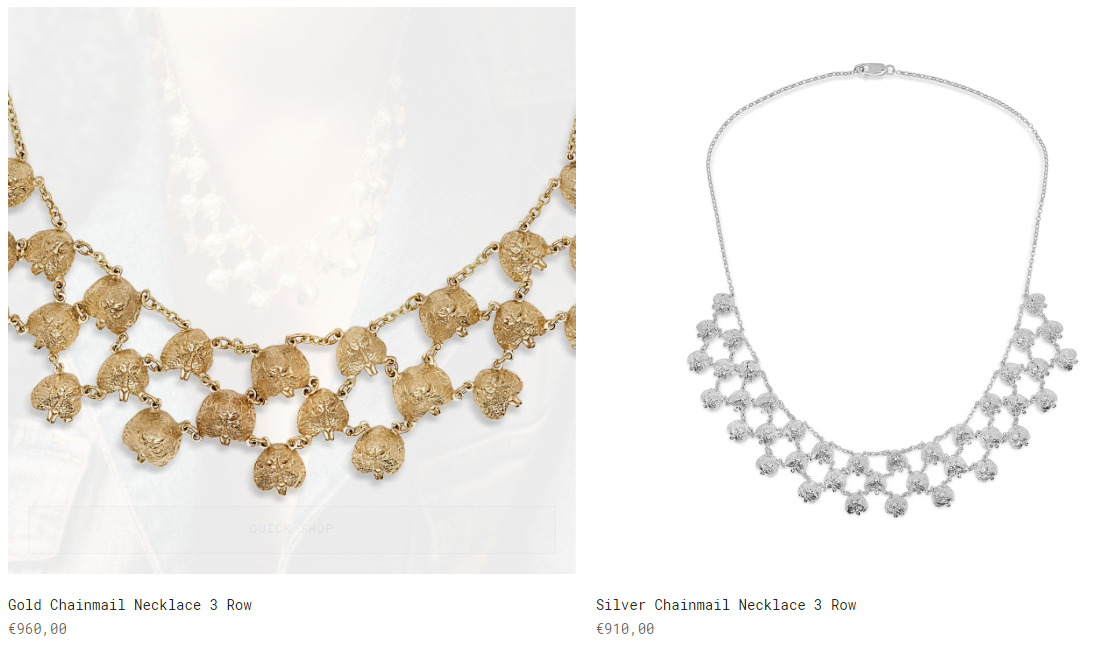
I chose Collect as the exhibition to work towards as it is one of the best places to showcase high-end one-off work. I would like to go down this route as I believe this has the most room to challenge my making skillset but also my conceptual understanding. The larger price point of these projects would enable me to spend more time to develop and research my ideas. Also, not needing to repeat the design or product would remove the problems of batch and repetitive manufacturing which I feel is not where my skill set, and creative passion lies. Furthermore, I think that my practice leans further towards idea and conversational based work rather than product and functional pieces. Therefore, placing myself in a market such as Collect would best enable this.
https://www.artsy.net/fair/collect-2023/artworks
https://media.craftscouncil.org.uk/documents/Collect_Open_2024_Application_Guidance_jdosyPp.pdf
https://www.craftscouncil.org.uk/collect-art-fair/exhibitors/collect-open
https://media.craftscouncil.org.uk/documents/FINAL_COL_2023_Review_V5.pdf
https://www.daphnekrinos.com/product-category/necklaces/?product-page=1
https://emerroberts.com/collections/necklaces
https://www.craftscouncil.org.uk/collect-art-fair
Analysing the report from the Crafts Council: The Market for Craft
This is a report that has researched the craft market by conducting a questionnaire for just under 5400 of the UK population and 1700 makers to create data of the size and details of the current market. This was then compared to the same study done in 2006 to determine the changes and trajectory of the market.
A quick market overview:
The market for craft has significantly increased between the 2006 and 2020 reports. The report states that:
the number of people buying craft items has "increased from 6.9m to 31.6m"
the craft sales has increased from "£883m in 2006 to over £3bn in 2019."
the number of craft "objects bought annually between 2006 and 2020 – from 5.6m to 24.7m objects"
Jewellery "had the highest volume of sales in 2006 and 2020 and the highest volume uplift (+4.1m)"
This shows a massive increase in the market where not only more craftspeople are participating in the market, but also more goods are being produced and sold. However, the price average price of goods has decreased from "£157 in 2006 to £124 in 2020." showing that the market has shifted from fewer higher end goods to a greater variety of price points which tend to be lower than before.
Reasons for an increase in makers in the market:
One of the most significant changes in the market has been the adoption of the internet for both research and ecommerce. The internet has provided unlimited knowledge for those getting into the market but also practicing artists to gain further information easier. Previously to learn a skill or another element necessary for a craft business you would have to go to a library or go learn from a specialist which took time and money. However, now that there is so much information available on the internet for free which can also be accessed at home or in the workshop more people can access the craft. This is one reason why we have seen an increase in disabled practitioners in the market "has more than doubled since the 2006 study".
The internet has also allowed practitioners to create their own e-commers sights alongside their portfolios. This allows them to showcase their work to far more people than a brick-and-mortar store could ever. Also, the ability to sell directly to a customer through a practitioner’s sight or others such as Etsy. This has shifted the markets sales which were predominantly through galleries and other distributers that would take a cut of the overall sale of work. Etsy reported in "2019 that 2.7m active sellers with 66m items for sale, perused by 46.4m active buyers" showing that the market for craft through e-commers sights make up a massive proportion. The Craft council report back this showing "The proportion of internet users shopping online in 2008 was 49%; in 2018, it had reached 87%".
Craft has had a shift from more of a collector’s item into the mainstream of household and gift items. One major contributing factor for the visibility of craft has been the success of craft tv programs across British television. The Great Pottery Throw Down is a good example which brought in 2.65m viewers in its second series creating a very accessible way to get involved in the handmade and craft industry.
Shift in market value:
Whilst the number of goods being sold, people buying craft items and the number of people selling in the market has increased there has been a decreased of objects being "bought annually between 2006 and 2020 – from 5.6m to 24.7m objects". This is shows the despite the increase in sails the value of the goods has decreased and the market is favouring poorer quality goods. This has had the largest impact for master craftspeople that have had to prove their product is still worth the same if not more due to the rising costs to produce since 2006.
Due to the rising costs across the industry and the reduction in average price many self-employed makers rely upon several additional streams of income, not only pure sales. Only "35%" of workers in the industry rely solely from sails alone whilst "22% supplement their income by teaching craft workshops or courses, and a further 18% do so with other freelance work connected to craft." This shows the importance of having a diverse skill set so that as a maker in the market you can have multiple streams of income and not rely upon one that may fluctuate.
Using the Craft Council Dashboard which displays the findings of the report to visualise the data:
This shows that there is a large proportion of people who are wanting to invest into craft as a market. Also, it is good to see that there is an almost uniform breakdown of the market in the UK showing that there is business happening in every country.
This shows that there is a great demand for handmade craft in the market despite the increasing access to mass manufacture products and craft. I believe that craft is one of the few areas that the public values a handmade object over a mass produced one as the buyer is more connected with the piece due to the history and story that it holds. I also think that a result of the COVID lockdowns meant that people were spending more time in their homes, started a shift to wanting more meaningful decorations and belongings that a handmade object provides.
This shows that despite Jewellery and Metalwork (my chosen field) being in the middle off what the people want from the market there is still a high demand.
This shows the importance of visibility and putting my name out into the market so that people know who they are potentially purchasing from. Furthermore, it shows that a good digital presence is important to gain sales but also having a good relationship with customers often physically talking to the can bring in another large proportion of sales through word of mouth.
This shows a good distribution of buyers throughout the generations, but a shift has developed towards the younger generations. I believe this is due to the influence of social media and the availability of craft. Also, there has been a move from primarily craft being sold and collected through exhibitions and the art world, usually amongst the older generations with more disposable income, to the younger generations caring about the ethics and sustainability of the product they buy.
This shows that there is a lot of different platforms to use to sell directly to customers. Facebook and YouTube are high up on the usage and are a great way to utilise video to display work alongside the process of manufacturing. This helps to bring the viewer/purchaser closer to the story and history of the handmade craft. As this survey was taken in 2020, I believe that the data for Tik Tok will be higher due to its increase in popularity over the past few years. Personally, I think this is an area where I could improve my practice to get a more established practice in the market.
Analysing my research from the Crafts Council report:
I think that it is very encouraging to see the growth in the craft and handmade market as I look to enter it in the next couple of years. I think that it is important to reflect on the quantity of other practitioners that have and are currently entering and to acknowledge that it is becoming an ever-increasing market to stand out in. Therefore, I need to ensure that I have a vision of the direction I see my practise heading in and how I can bring something unique and new to the craft market. Furthermore, the decrees in average price for craft goods is worrying to me as I would like to enter the upper end of the market. I believe this is an area where experience and working with others in this area could help me to gain the skills needed to convince buyers why my practice is worth a higher price.
If I head down the route of high-end-goods I also need to question how I separate myself from the mainstream and bring something to the market that the everyday consumer couldn't have seen on tv. I want to create a body of work that challenges the viewers ideas and creates conversation. This may mean that if I go down the self-employed route, I will need to diversify my income through other means such as teaching or technician work.
Another area that my research highlighted was the importance of visibility in the market. This spans many areas of my practice but currently I feel that I need to make myself more known through building a great presence on social media. Furthermore, I should curate my website so that it is easy to access information about my practice. I feel that it would also benefit me to speak to and work alongside more people in the field so that I can build up a larger network of experienced practitioners that could provide me with work or projects further in my career.
https://application.marketsight.com/app/ItemView.aspx?ID=e3a4df37-0af8-4045-8158-acc400f868c7
https://www.craftscouncil.org.uk/documents/880/Market_for_craft_full_report_2020.pdf
Exploring opportunities:
Rising Stars is an exhibition opportunity open to makers early in their area, students and graduates from BA + MA courses. A show of 20 - 25 makers display their work in New Ashgate Gallery, Farnham creating a collection of the best up and coming in the craft and art world. This showcase could put me in the eyes of the public but also kick start my place in the industry and gain access to the top individuals for further work and experiences. Also, the exhibition has promised 5 places to minorities to help increase representation in the art world. I believe my current projects exploring my gender identities would align well with their commitment to tell similar stories.
The winner of the exhibition which is assigned by a panel of judges from the projects partners, will receive £1000 bursary and a solo exhibition in 2025. This opportunity would allow me to rapidly set up and improve my practice for the future. Also, the solo exhibition would put my name out into the market and further my previous points on exposure.
Residency with Kinetic Wind Sculptor Will Carr is an opportunity to spend 1-3 weeks working alongside him to produce kinetic sculptures. This shot intense period of pure making would allow me to dive deeper into my passion of moving installation work and could widen my approach to my practice. The residency provides some materials, workshops and accommodation making it financially and logistically possible to do as a student or having just graduated. In my opinion this opportunity would play to my strengths as I am best suited to the design and making sides of a residency rather than a researching project.
Boomer Art Prize is a competition open to all ages and artists looking at "discovering perspectives and innovative visions" and bringing them together. This combines both the local and international art seen and would be a great way to get exposure into the market. Alongside this there are numerous prizes from 1st to 4th providing up to £5000 and exhibition space in 3 of their group projects. This would help me to set up and improve my practice in the market once leaving university.
Boomer Gallery (2024) THE BOOMER ART PRIZE Second Edition. Available at: https://boomergallery.co.uk/ (Accessed: 05/01/20024).
Developing your Creative Practice funding provided by Arts Council is an opportunity for artists of all disciplines to apply form £2000 - £1200 to support their creative practice. This is most likely a fund that I would be interested further in my career as it is a highly competitive opportunity. It not only provides money but also to become a part of a collective of artists from all mediums and practices.
Pricing work research:
Pricing the final piece relies upon multiple aspects not just the material cost. To price the work, you need to lay out all the different aspects that went into the final piece to be sold.
Material cost
Studio cost (rent, bills)
Equipment (purchasing or rental or outsourcing)
Time spent (researching, developing, designing, manufacturing, travel, social media and promotion)
Packaging and postage
Storage cost
Insurance
Gallery fee or Retail cost
After these have been added up you need to decide where and how the work is going to be sold. If you are going to sell across multiple different channels such as in galleries and on your own ecommerce sight there must be a consistent price so that sellers off the work aren’t undercut, reducing their business and the potential for further business in the future. "The retail price is normally around 2 to 3 x the trade or wholesale price, depending on the mark up of the retailer." This means that once all the cost that has gone into making the product is added up it needs to be multiplied usually by 2.5 as an average. This dramatically increases the price for the customer but is essential to for a sustainable business. Therefore, researching the market before spending lots of time and money to develop a product is essential to understand if it is cost effective.
Calculating an hourly rate is all dependent on how much money and how many hours you want to work out of the year. It is crucial to remember that not every week in the year is spent working and the time spent off needs to be paid for by the time working. Also, it is important to include the necessity for a savings fund not only for personal use but also to help in emergencies in the business such as broken machinery and illness stopping you from working entirely.
https://www.thedesigntrust.co.uk/finance-and-money-books-for-creatives/
https://www.thedesigntrust.co.uk/calculate-the-cost-price-of-your-creative-product/
https://www.thedesigntrust.co.uk/cost-price-wholesale-price-retail-price/
https://www.creativeboom.com/tips/tips-on-how-much-to-charge-for-freelance-work/

